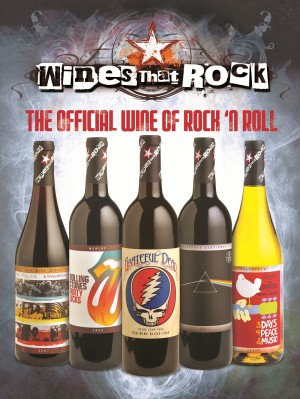Wines That Rock: A Robust Revolution in Taste
GALO: Some people question wine critics saying that reporting on qualitative nuances between wines is difficult because taste and preference are subjective. Yet, others say that criticism is difficult, but not fraudulent because people can be trained to discern between quality and non-quality varietals. Where do you fall in this argument?
MB: I think that some wines that are unquestionably flawed are simply universally bad and not all that subjective. It is tough to savor poor wines that have high volatile acidity (sign of the wine turning to vinegar), or those that are thin or watery (over-cropped vines), corked (smell of wet cardboard due to a faulty cork), or oxidized (oxygen has robbed the wine of its youth). Other nuances in wine are completely in the eye of the beholder. A Cabernet without obvious problems may appear wonderful to a critic who will applaud the wine with a high score while a consumer may find it unacceptable. Neither person is wrong. A wine drinker seeking to educate themselves should let their own taste buds determine what they feel is a great wine. If they find that a wine they enjoyed was also seen positively by a critic, wine steward or sommelier, then they have someone they can trust and may follow their suggestions confidently. I think there is usefulness in professional criticism, but it should not be followed with blind faith. We are all unique in what we prefer.
GALO: Many wine enthusiasts speak of wine’s embodiment of connection: linking the earth and the sky and man and environment through the cultivation and production process of winemaking. Galileo even said that “wine is sunlight, held together by water.” Yet, there is this fascinating connection between people sipping wine together at a gathering or dinner party. Which connection is most fascinating to you and why?
MB: Your surroundings as well as who you are with, your mood and the food you are eating, all contribute to your sense of cognition or “there-ness,” and thus have an effect on enjoyment of the wine. I’m partial to a fireplace, my feet up, the stereo on, and the company of my family. A decadent Zinfandel after a great surf session is hard to beat too.
GALO: Speaking to another connection, you merge sustainable farming and green power with wine manufacturing. In fact, you have done it so well that your Mendocino County winery has won the 2009 Governors Economic and Environmental Leadership Award for the second time in three years. How has “going green” influenced your winemaking process as art? Has it helped to add more conviction in your mission to making great tasting wines, or has it provided you with more merit among consumers?
MB: This effort to improve the effect on the environment has created an attitude of a reinvestment in trust with nature within the winery and in our winemaking. We used to use more technology and chemical additions a few years ago than we do now. Now some of those machines are collecting dust and we let many of our wines ferment on their own yeasts rather than inoculating. This was how wine used to be made and the terroir is allowed to shine through rather than be smothered by a forceful technological driven hand.
GALO: Going back to the music and wine juxtaposition, it’s widely known that music, which can induce euphoria, influences how wines taste. In fact, most professional tastings are done in silence. In your opinion of all wines, what types taste delightful or dreadful while listening to classic rock?
MB: Sweet or high acid white wines don’t really flow too well for me when listening to great amplified guitar driven music. There is too much contrast between those types of wine and the aggressive nature of the music. Classical music might be a better fit.
GALO: It is widely believed that wine is a great sedative and like music, will help one drift off to sleep. In contrast, your Web site states that looking at your bottle labels incites “music playing in your head,” which would indirectly inspire people to talk and swap stories. How much are your wine and its packaging about conveying a memory or feeling, or is it about living to the fullest in a new moment or on an occasion?
MB: A bit of both. The memory conveyed by the imagery of the wine label can set the initial mood for what is to follow. I think the term is cognitive priming, how memories can serve as a catalyst to sensitivity to certain stimulus. So, I would have to say that the wine’s goal is to stir up a positive memory the music made, and drinking the wine and listening to the music will sustain the mood for whatever is to follow, be it relaxation or tearing the roof off. I like the term “social lubricant.”
GALO: Since much of winemaking flourishes at the hands of human intervention, what future innovations do you plan to introduce with Wines That Rock?”Would you create a blended wine to maybe accompany great classic rock collaborations or blending with other genres? Would you look into finding and incorporating some vintage wines that have a robust flavor or finish that speaks to an imperative year in classic rock?
MB: Vintage wines to showcase an era? Cool concept, but I think I would have a hard time digging up enough quality wine from the ’60s to blend a wine for that musical/political period. The oldest stuff in the cellar is only seven-years-old, although it is some seriously kick-ass stuff. As far as for future projects under consideration, the sky is the limit. There are many posters on the office walls at RZO in NY that are constant sources of inspiration and “what if we did this?” moments. Our only limits are our imaginations and I consider myself to be lucky to be around such creative and fun seeking people.











